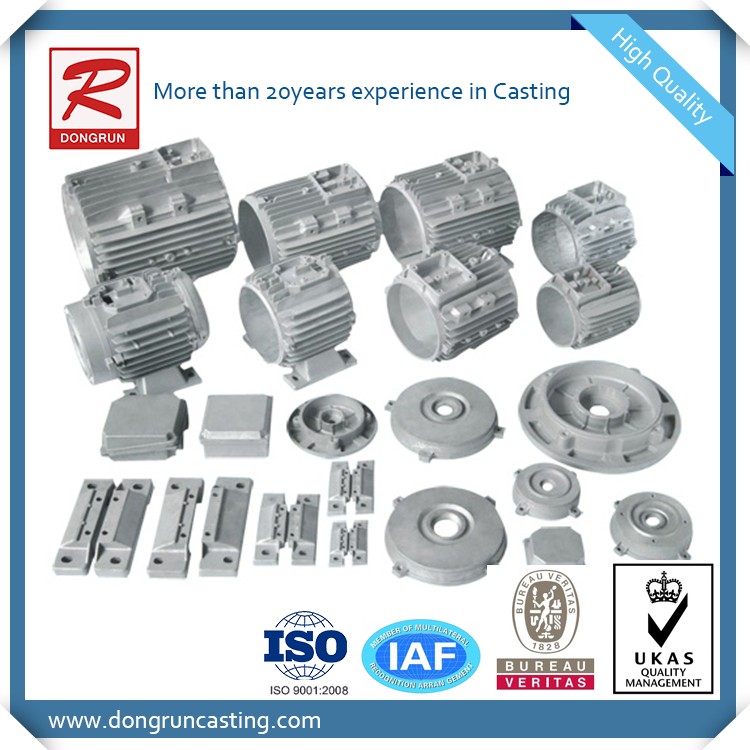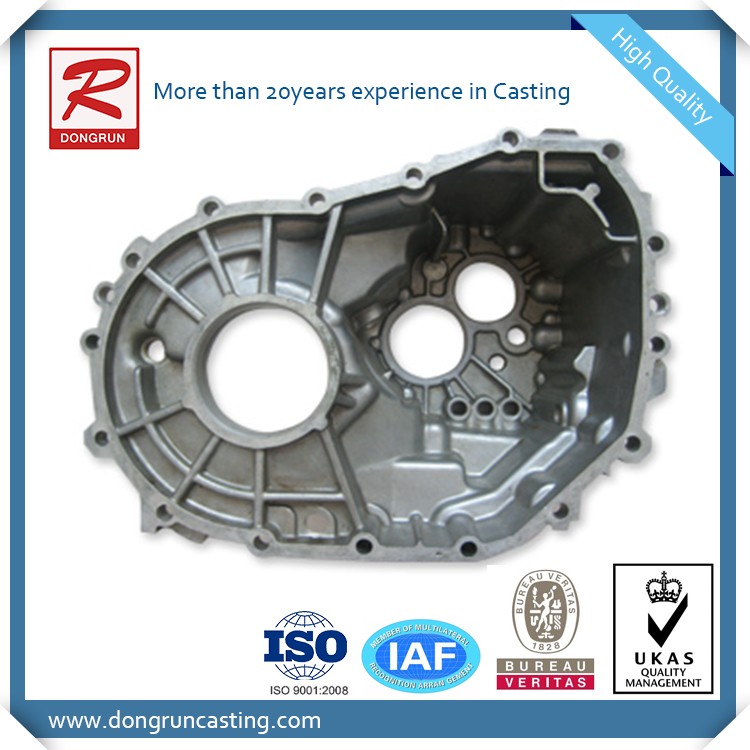Causes and Solutions of Pores in Aluminum Alloy Castings
In the production process of aluminum alloy castings, porosity defects often occur due to improper operation or unskilled craftsmanship. Once pores appear, castings are often scrapped due to quality problems, increasing production costs. However, there are many reasons for the occurrence of porosity defects in aluminum alloy castings. Many companies always feel overwhelmed when they encounter problems and have no way to start. This article will start with the causes of pores in aluminum alloy castings and analyze the solutions to pore defects.
Causes:
1.Pores caused by poor quality of refining and degassing
In the production of aluminum alloy casting, the pouring temperature of molten aluminum is usually 610-660 °C. At this temperature, a large amount of gas (mainly hydrogen) is dissolved in the molten aluminum, and the solubility of aluminum alloy hydrogen is the same as that of aluminum alloy. The temperature is closely related. It is about 0.69cm3/100g in the liquid aluminum liquid at about 660℃, and only 0.036cm3/100g in the solid aluminum alloy at about 660℃. At this time, the hydrogen content in the liquid aluminum liquid is about solid. 19 to 20 times. Therefore, when the aluminum alloy solidifies, a large amount of hydrogen precipitation exists in the aluminum alloy casting in the form of bubbles.
Reduce the gas content in the molten aluminum and prevent a large amount of gas from precipitation during the solidification of the aluminum alloy to generate pores. This is the purpose of refining and degassing in the aluminum alloy smelting process. If the gas content is originally reduced in the molten aluminum, the amount of precipitation gas will be reduced during solidification, and the resulting bubbles will also be significantly reduced. Therefore, the refining of aluminum alloy is a very important technological means. If the refining quality is good, the pores must be less, and the refining quality is poor, and the pores must be more. The measure to ensure the quality of refining is to choose a good refining agent. A good refining agent can react to generate bubbles at about 660 ° C. The generated bubbles are not violent, but uniform and continuous bubbles are generated. The aluminum liquid is fully contacted, and the hydrogen in the aluminum liquid is adsorbed and brought out of the liquid surface. Therefore, the bubbling time should not be too short. Generally, the bubbling time should be 6 to 8 minutes.
When the aluminum alloy is cooled to 300 ℃, the solubility of hydrogen in the aluminum alloy is only less than 0.001cm3/100g, which is only 1/700 of the liquid state. The pores generated by the precipitation of hydrogen after solidification are dispersed and small. The pinhole, which does not affect the air leakage and the machined surface, is basically invisible to the naked eye.
When the molten aluminum solidifies, the bubbles generated due to hydrogen precipitation are relatively large, and most of them are located in the core of the molten aluminum that solidifies at the end. Although they are also dispersed, these bubbles often lead to leakage, which often leads to the scrapping of the workpiece.
2.Pores caused by poor exhaust
In aluminum alloy casting, due to the poor exhaust passage of the mold and the poor exhaust design structure of the mold, the gas in the cavity cannot be completely discharged smoothly during die casting, resulting in pores in some fixed parts of the product. The pores formed by the gas in the mold cavity are sometimes large and sometimes small, and the inner wall of the pores is the oxidation color of aluminum and air oxidation. It's a grey inner wall. For the pores caused by poor exhaust, the exhaust channel of the mold should be improved, and the residual aluminum skin on the exhaust channel of the mold should be cleaned in time to avoid it.
3. Porosity caused by air entrainment due to improper die casting parameters
In the die-casting production, the die-casting parameters are improperly selected, and the filling speed of the aluminum hydraulic casting is too fast, so that the gas in the cavity cannot be extruded from the cavity in a timely and stable manner, and is drawn into the aluminum liquid by the liquid flow of the aluminum liquid. Rapid cooling, encased in a solidified aluminum alloy shell, and inability to discharge, resulting in larger pores. Such pores are often under the surface of the workpiece, and the molten aluminum inlet is less than the final confluence, pear-shaped or elliptical, and more and larger at the final solidification. For this kind of pores, the filling speed should be adjusted so that the aluminum alloy liquid flow will advance smoothly, and no high-speed flow will be generated and the air will be entrained.
4. Shrinkage holes of aluminum alloy
Like other materials, aluminum alloys shrink during solidification. The higher the casting temperature of aluminum alloys, the greater the shrinkage. A single pore caused by volume shrinkage exists in the final solidification part of the alloy, which is irregular in shape and serious. networked. Often in the product, it exists at the same time as the pores due to hydrogen evolution during solidification. There are shrinking pores around the hydrogen evolution pores or stomata, and there are filamentous or mesh pores extending to the outside around the bubbles.
For this kind of porosity, the casting temperature should be solved. If the die casting process conditions allow, the aluminum liquid casting temperature during die casting should be reduced as much as possible. In this way, the volume shrinkage of the casting can be reduced, and the shrinkage pores and shrinkage porosity can be reduced. If such pores often appear in the heating part, you can consider adding core pulling or cold iron to change the final solidification part and solve the problem of leakage defects.
5. Pores caused by excessive product wall thickness difference
The shape of the product often has the problem of excessive wall thickness difference. The center of the wall thickness is the place where the molten aluminum solidifies at the end, and it is also the most likely place to generate pores. The pores at the wall thickness are a mixture of precipitation pores and shrinkage pores. measures to prevent.
When designing the shape of the product, it should be considered to minimize the problem of uneven wall thickness or excessive thickness, adopt a hollow structure, and consider adding core pulling or cold iron, or water cooling in the mold design, or increase the cooling of the mold here. speed. In die-casting production, attention should be paid to the amount of supercooling in parts with large thicknesses, and the pouring temperature should be appropriately reduced.
Solutions:
(1) To ensure the refining and degassing quality of aluminum alloy smelting, select good refining agents and degassing agents to reduce the gas content in the molten aluminum, and remove oxides such as scum and foam on the liquid surface in time to prevent the gas from entering again. in die casting.
(2) Select a good mold release agent, the selected mold release agent should not generate gas in die casting and have good mold release performance.
(3) Ensure that the exhaust of the mold is unobstructed and not blocked, and the exhaust is smooth to ensure that the gas in the mold is completely discharged, especially the exhaust channel must be unobstructed at the final polymerization of the aluminum liquid.
(4) Adjust the parameters of the die casting, and the filling speed should not be too fast to prevent air entrainment. The casting temperature should also be well controlled.
(5) In product design and mold design, attention should be paid to the use of core pulling and cooling to minimize wall thickness differences.
(6) For the pores that often appear in the fixed parts, the mold and design should be improved.
ZheJiang Dongrun Casting Industry Co,.Ltd was built in 1995, We have been in the casting industry for more than 25 years. No matter what type of molding you need done, we are the right supplier for your jobs. Unlike other of our competition, we offer four types of castings.
Dongrun Casting have 20000 square meters facility houses and 200 production & test equipment, From quotation and tooling design to casting and finished machining, we can work with you at every stage. We serves wide range of industries-from Fortune 500 corporations to small and midsize OEMs. Our products includes:
❖ HVAC | ❖ Architectural parts |
Browse our online showroom to see what we can do for you. And then E-mail:dongrun@dongruncasting.com us your specifications or inquiries today
